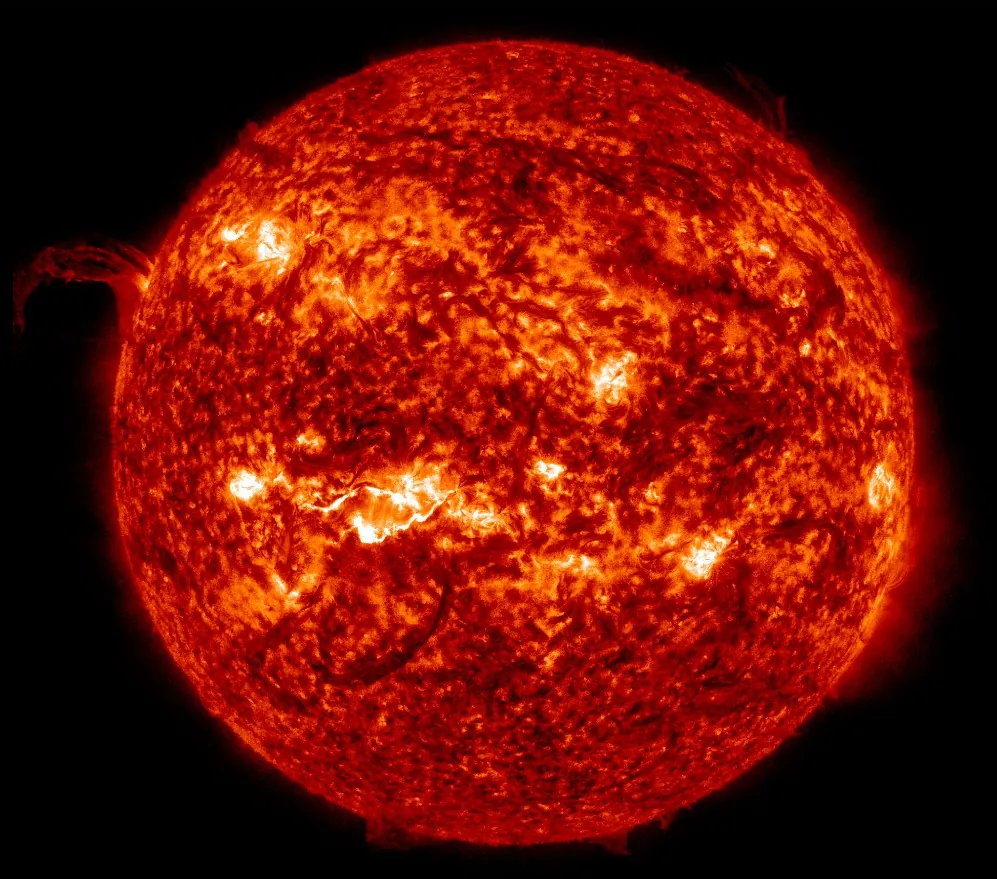A coronal mass ejection produced by a filament eruption on January 20, 2024, is expected to reach Earth late January 22, producing G2 – Moderate geomagnetic storming.
A complex filament eruption centered near S15E22 began at around 08:48 UTC on January 20, 2024, as seen in NASA SDO 304 imagery. This event produced a long-duration C3.5 solar flare which peaked at 09:34 UTC.
The subsequent coronal mass ejection (CME), first visible in LASCO C2 imagery at 09:12 UTC on January 20, appeared to have three fronts; to the east, southeast, and south-southwest.
Early analysis suggests a portion of this CME will arrive late in the UTC day on January 22.


Weakly enhanced solar wind conditions are expected on January 21 due to positive polarity coronal hole high speed stream (CH HSS) influences. A stronger enhancement is likely beginning late on January 22 through 23 due to the anticipated arrival of the aforementioned CME.
As a result, SWPC issued a Geomagnetic Storm Category G2 Watch at 07:53 UTC today, with G2 – Moderate conditions expected on January 22 and 23.
Potential impacts: The area of impact is primarily poleward of 55 degrees Geomagnetic Latitude.
- Induced currents – Power grid fluctuations can occur. High-latitude power systems may experience voltage alarms.
- Spacecraft – Satellite orientation irregularities may occur; increased drag on low Earth-orbit satellites is possible.
- Radio – HF (high frequency) radio propagation can fade at higher latitudes.
- Aurora – Aurora may be seen as low as New York to Wisconsin to Washington state.
References:
1 Product: Forecast Discussion – Issued: 2024 Jan 21 0030 UTC – Prepared by the U.S. Dept. of Commerce, NOAA, Space Weather Prediction Center
Featured image credit: NASA/SDO AIA 304, The Watchers
If you value what we do here, create your ad-free account and support our journalism.
Major X3.3 solar flare erupts behind the SW limb, S2 – Moderate solar radiation storm
Friday, February 9, 2024
Long-duration M5.1 solar flare erupts from Region 3575
Wednesday, February 7, 2024
Long-duration M4.2 solar flare erupts from Region 3575
Tuesday, February 6, 2024
M6.7 solar flare erupts from Region 3559, producing S2 – Moderate solar radiation storm
Monday, January 29, 2024
Solar filament eruption produces Earth-directed CME
Tuesday, January 23, 2024
Major X5.0 solar flare erupts from Region 3536 — the strongest flare of Solar Cycle 25
Monday, January 1, 2024
Multiple M-class solar flares and CMEs, possible CME impact on December 27
Monday, December 25, 2023
